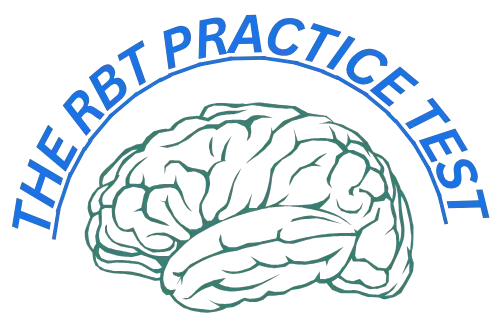Unit C – Skill Acquisition (RBT Study Guide)
Skill acquisition in Applied Behavior Analysis (ABA) refers to the systematic process of teaching new, meaningful behaviors that improve a client’s independence and quality of life.
RBTs play a vital role in this process by implementing structured teaching programs designed by the BCBA to help individuals learn new communication, social, and daily living skills.
💡 Quick Definition :
Skill acquisition in ABA is the structured process of teaching new behaviors or abilities using evidence-based strategies like reinforcement, prompting, and repetition.
Key Components of a Skill Acquisition Plan (SAP)
An SAP is a written plan that outlines how new skills will be taught, tracked, and mastered. Each component ensures the learning process is clear, measurable, and effective.
1. Operational Definition of the Skill
Clearly describe the target behavior in observable and measurable terms.
Example: Instead of “be more social,” define it as “initiate greetings with peers using words.”
2. Teaching Procedures
This outlines how the skill will be taught. Common ABA teaching methods include:
- Discrete Trial Training (DTT) – Structured, repeated practice of a single skill.
- Natural Environment Teaching (NET) – Teaching during real-life activities to promote generalization.
🔍 Tip:
DTT is a highly structured method used to teach skills step-by-step, while NET focuses on learning within everyday routines and play.
3. Reinforcement Strategies
Reinforcement motivates learning. It involves giving a reward immediately after the correct behavior.
- Types: Tangible (toy), social (praise), or token (points).
- The goal is to strengthen the behavior through consistent, positive feedback.
4. Prompting and Fading
Prompts guide the learner to success. Common types include verbal, gestural, and physical prompts.
Once the learner responds correctly, prompts are gradually faded to build independence.
5. Data Collection and Progress Tracking
Accurate data is the backbone of ABA. RBTs record every response using data sheets like frequency, trial-based, or duration sheets.
These records help the BCBA adjust teaching methods as needed.
🧩 Common Teaching Procedures in Skill Acquisition
Discrete Trial Training (DTT)
A structured teaching method that breaks skills into small, teachable steps.
Steps:
- Instruction → 2. Learner Response → 3. Consequence → 4. Data Recording.
Example: Teaching a child to identify colors using flashcards.
Natural Environment Teaching (NET)
Focuses on using real-world situations to teach new skills.
Example: Teaching “requesting” while playing with favorite toys.
Task Analysis and Chaining
Complex tasks are broken into smaller steps.
- Forward Chaining: Teach the first step first.
- Backward Chaining: Teach the last step first.
Example: Learning to brush teeth or tie shoes.
Shaping
Gradually reinforcing behaviors that are closer and closer to the desired behavior.
Example: Rewarding each attempt a child makes to say “ball” until they can pronounce it fully.
Generalization and Maintenance
Once a skill is learned, it must be applied in different settings (home, school) and maintained over time.
Consistency and reinforcement help prevent skill loss.
Practice More
For full preparation, explore these:
👩🏫 The RBT’s Role in Skill Acquisition
Registered Behavior Technicians (RBTs) are responsible for:
- Implementing teaching procedures exactly as written by the BCBA.
- Using correct prompts and reinforcements.
- Collecting accurate data for every session.
- Reporting progress and challenges honestly.
⚖️ Ethical Reminder:
RBTs cannot modify or create new teaching plans. All changes must come from a supervising BCBA.
| Skill Type | Example Goal | Teaching Method |
|---|---|---|
| Communication | Requesting “help” using words | DTT + Reinforcement |
| Social | Taking turns during play | NET |
| Self-Help | Brushing teeth independently | Task Analysis + Chaining |
| Academic | Matching shapes or colors | DTT |
| Daily Living | Setting the table | Task Analysis |
⚖️ Ethical Considerations in Skill Acquisition
Ethics are crucial in every RBT task.
RBTs must:
- Implement only approved skill plans.
- Avoid personal modifications.
- Respect client dignity and preferences.
- Maintain professional boundaries.
- Record data truthfully and confidentially.
🧠 Summary of Unit C – Skill Acquisition
Skill acquisition in ABA focuses on teaching clients new, meaningful behaviors through structured and natural learning opportunities.
As an RBT, your role is to follow the teaching plan, reinforce correct behaviors, collect accurate data, and promote independence and generalization.
🧩 Practice Questions – Unit C: Skill Acquisition
- Which of the following best defines “shaping” in ABA?
- What is the main goal of prompting and fading?
- What is the difference between DTT and NET?
- How does reinforcement support skill learning?
- What is the RBT’s role in a skill acquisition plan?
❓FAQs about RBT Skill Acquisition
Q1. What is skill acquisition in ABA?
It is the structured process of teaching new behaviors or abilities using proven methods like reinforcement, prompting, and repetition.
Q2. What are common skill acquisition techniques?
Discrete Trial Training, Natural Environment Teaching, Task Analysis, Chaining, Shaping, and Generalization.
Q3. How does an RBT help with skill acquisition?
The RBT implements the plan, collects data, reinforces correct responses, and reports progress to the BCBA.
Q4. What is the difference between DTT and NET?
DTT is structured and repetitive, while NET occurs naturally in daily routines.
Q5. Why is generalization important?
It ensures the client can use learned skills in different settings and with different people.
